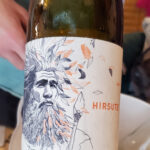France:
The Country and its Wine
 France is one of the top winemaking countries in the world, and French wine is what you might naturally think about first if you’re thinking about wine in general.
France is one of the top winemaking countries in the world, and French wine is what you might naturally think about first if you’re thinking about wine in general.
France’s wine regions owe a lot to how diverse the soil is. Bordeaux has gravelly soil, while Burgundy has a limestone-clay mix. The Rhône has rocky alluvial soils, while Champagne’s soils are much chalkier. This variety helps explain why France is all about terroir–the taste of the place.
Let’s talk about French wine–where it’s grown, what’s grown, how it’s been grown through history, and which French wines I’ve tried myself.
🌐 French Wine Regions
France, more than any other country, is known for its specific wine region identities.
🗺️ Major French Wine Regions
- Bordeaux is known for prestigious red blends of Cabernet Sauvignon, Merlot, and Cabernet Franc, as well as sweet wines from Sauternes and dry whites from Pessac-Léognan.
- The Garonne River runs through Bordeaux, separating it into the Left Bank (Médoc) and the Right Bank (St.-Émilion, Pomerol).
- Burgundy (Bourgogne) is known for incredible Pinot Noirs and Chardonnays. Burgundy is divided into Chablis in the north, Côte de Nuits, Côte de Beaune, Côte Chalonnaise, and Mâconnais.
- Beaujolais is considered by some to be part of Burgundy, while others consider it separately. It is legally part of the region, but different enough in growing conditions to be thought of as separate.
- Champagne is the only region allowed to produce true Champagne–famous for its sparkling wines made from Chardonnay, Pinot Noir, and Pinot Meunier.
- The Rhône Valley is split into the Northern Rhône (with iconic Syrahs and white blends) and the Southern Rhône (with iconic Grenache-based blends like Châteauneuf-du-Pape).
🗺️ Additional French Wine Regions
- The Loire Valley produces crisp whites and includes Sancerre and Vouvray.
- Alsace is known for aromatic, dry white wines.
- Provence is renowned for pale, dry rosés.
- Languedoc-Roussillon is a very large and diverse region, known for variety and good value for French wine.
🗺️ Lesser-Known French Wine Regions
- Jura is noted for unique styles like Vin Jaune and sparkling Crémant du Jura, often using the Savagnin grape.
- Savoie produces light, refreshing white wines from Jacquère and Altesse, alongside some reds and rosés in the Alpine foothills.
- Corsica is an island region crafting Mediterranean-influenced wines from indigenous grapes like Nielluccio and Vermentino
- Southwest France (Sud-Ouest) is a more diverse region offering full-bodied reds (like Cahors), crisp whites, and sweet wines (such as Monbazillac). This region is often overshadowed by nearby Bordeaux.
- Though Armagnac is mostly known for brandy, the region also produces wines, especially robust whites used for distillation.
🍾 Common Grapes in France
France is home to some of the most famous grape varieties in the world, as well as a few lesser-known native varieties.
🍇 Major International Grapes
- Cabernet Sauvignon: Native to Bordeaux; a key red grape in many Bordeaux blends and a global favorite.
- Merlot: Widely grown in Bordeaux, especially on the Right Bank, where it produces soft, plush wines.
- Cabernet Franc: Found in Bordeaux blends and as a standout varietal in the Loire Valley.
- Pinot Noir: The star of Burgundy, producing elegant and complex red wines.
- Syrah: The dominant red grape of the Northern Rhône, known for bold and spicy wines.
- Grenache: A major grape in Southern Rhône blends.
- Chardonnay: Burgundy’s flagship white grape, also widely planted in Champagne.
- Sauvignon Blanc: Found in the Loire Valley and Bordeaux.
- Viognier: An aromatic white grape of the Northern Rhône, especially in Condrieu.
- Malbec: A Bordeaux grape from Cahors, France, now more associated with Argentina.
🍇 Native & Historic French Grapes
- Tannat: Grown in the Southwest, known for its tannic, ageworthy wines. Now the national grape of Uruguay.
- Petit Verdot: A Bordeaux blending grape, contributing color and structure.
- Carignan: Found in Southern France, often in Languedoc blends.
- Gamay: The primary grape of Beaujolais, producing light, fruity reds.
- Mourvèdre: A key component in Southern Rhône blends and Provence rosés.
- Marsanne and Roussanne: White Rhône grapes used in blends.
- Chenin Blanc: The dominant white grape of the Loire Valley, producing everything from dry whites to sweet wines and sparkling wines.
- Melon de Bourgogne: Used in Muscadet wines in the Loire Valley.
- Folle Blanche: Historically used for brandy production in Cognac and Armagnac.
🍇 Unique Regional Grapes
- Savagnin: Found in Jura, used in oxidative wines like Vin Jaune.
- Pinot Meunier: A red grape used in Champagne blends.
- Picpoul: A Southern French white grape producing fresh, acidic wines.
- Clairette: A white grape used in Provence and Rhône blends.
- Bourboulenc: A Southern Rhône white grape often blended with others.
🍇 Lesser-Known Grapes
- Mondeuse: A red grape found in Savoie, producing spicy, aromatic wines.
- Fer Servadou: A red grape grown in the Southwest, offering earthy and herbal notes.
- Nielluccio: A Corsican grape, genetically related to Sangiovese.
This is far from everything, but I have to leave some out. I mean, it’s France–of course there’s going to be a lot!
📅 French Wine Vintage Reports
I’m compiling these shortly–thanks for your patience!
📖 History of Wine in France
France’s wine story starts with the ancient Celts, who cultivated wild Vitis vinifera before anyone else arrived, potentially 12,000 years ago.
When the ancient Greeks founded Massalia (today Marseille) in the 6th century BCE, they brought Mediterranean viticulture along with them, focusing on regions where figs and olives could also grow.
(A Greek writer and geographer named Strabo was skeptical of growing wine further north in France–which does not surprise me, as I have personal beef with Strabo for other reasons involving his limited imagination, too long and unrelated to get into here.)
Under Roman rule, starting around the 2nd century BCE, wine culture in France expanded significantly, though at first it was still mostly Italian wine being drank. By the 1st century CE, though, wines from Vienne (today Rhône) were already highly regarded by Pliny the Elder.
Roman innovations allowed wine culture to spread along trade routes into Burgundy, Bordeaux, the Loire Valley, and more. Demand was high, and it was expensive to transport, so why not grow local? Port cities were more likely to have wine shipped to them vs. transporting heavy barrels full of liquid over land.
After the fall of the Roman Empire, viticulture persisted in France in part due to the influence of the Christian Church (although evidence suggests that pagans drank wine regardless–it’s just that the Church happened to be in power and continued it anyway). Monasteries became key wine producers, and the concept of terroir began to emerge with monastic record-keeping.
In the Middle Ages, wine production continued to expand, and nobility made it more and more of a status symbol. Political alliances influenced the reach of French wine–for example, Bordeaux wines thrived in England after Eleanor of Aquitaine married Henry II in 1152. Meanwhile, Dutch traders introduced concepts like fortification and sulfur addition.
The Avignon Papacy in the 14th century boosted the reputation of Rhône wines–when Petrarch begged Pope Urban V to return the papacy to Rome, the Pope cited good Burgundy as a reason to stay.
In the 18th century, the Age of Enlightenment brought new scientific inquiry into winemaking, with vintners studying grape varieties with more precision and refining their techniques. The 1855 Bordeaux Classification system introduced here is still used today.
The French Revolution led to a reduction of quality, leading Jean-Antoine Chaptal, one of Napoleon’s ministers, to compile and disseminate wine information, including a process for adding sugar to wine to increase alcohol level–a process now named after him, known as chaptalization.
An outbreak of powdery mildew in the 1850s, followed by the phylloxera epidemic of the 1860s, utterly decimated French winemaking. French vines had no resistances to these imported American diseases and pests, and they were devastated as a result. Grafting European vines onto resistant American rootstocks helped recover the industry, but it was tough going, and brought more problems (like downy mildew and black rot) into the mix, too.
Of course, in the 1900s, two world wars heavily disrupted wine production and life in general. The development of railroads helped bring wine from interior vineyards to the global trading forefront. In 1935, France created the Appellation d’Origine Contrôlée (AOC) system, which is widely known today.
France remains the benchmark of winemaking quality, even as other nations improve around it.
🍷 French Wines I’ve Tried
See all Wine Countries, or jump straight to: France, Italy, Spain, USA, Australia, New Zealand, South Africa, Portugal, Argentina, Chile, Austria, Georgia, Uruguay, Slovakia, Switzerland...



